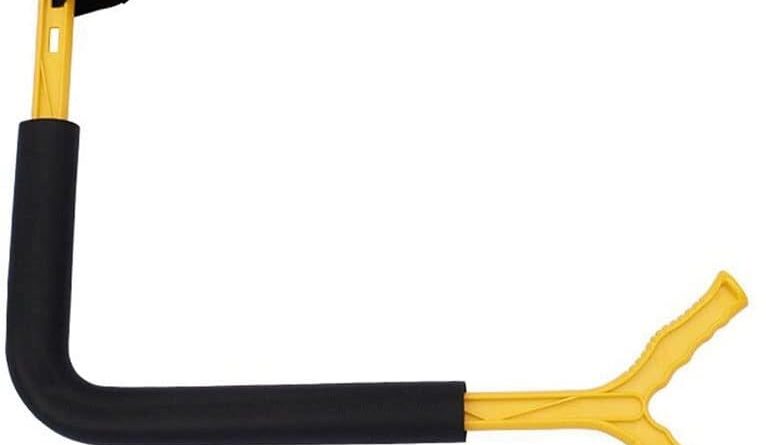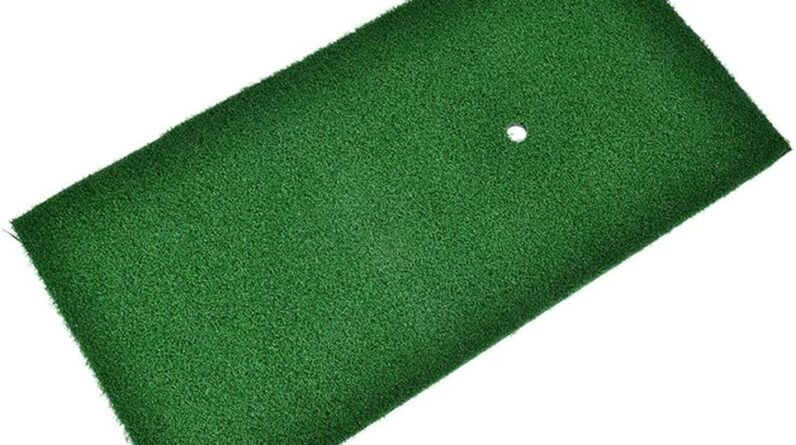Have you ever found yourself standing on the green, studying the subtle slopes and contours, unsure of how to accurately read it? Whether you’re a seasoned golfer or a beginner, reading the greens can be a challenge. But fear not! In this article, we will explore some tips and techniques that will help you navigate the greens with precision and confidence. So grab your putter, get ready to improve your golf game, and let’s dive into the art of reading greens!
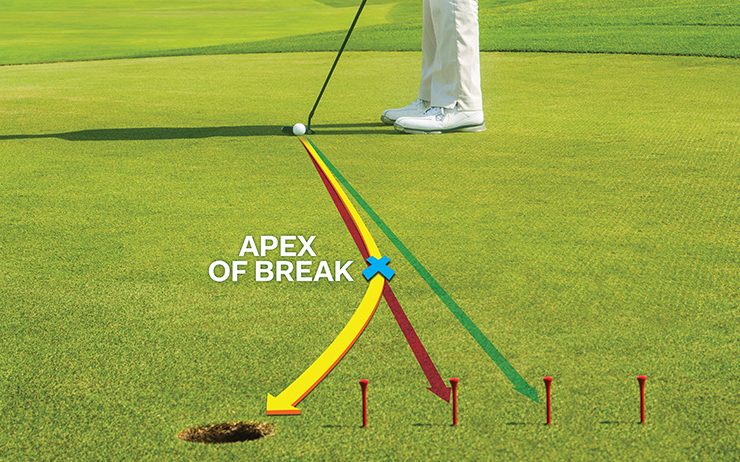
Choosing the Right Putter
Putting is a crucial aspect of the game of golf, and having the right putter can greatly improve your accuracy and overall performance on the green. When it comes to choosing the right putter, there are a few key factors to consider.
Finding the Right Putter
Finding the right putter begins with understanding your own putting stroke. Every golfer has a unique putting style, and it’s important to find a putter that complements your stroke. There are different types of putters available, such as blade putters, mallet putters, and counterbalanced putters. Each type has its own benefits, so it’s important to test different options and see which one feels the most comfortable to you.
Understanding Putter Material
Another important consideration when choosing a putter is the material it is made of. Putters can be made from various materials, such as stainless steel, aluminum, and carbon steel. Each material has its own unique properties that can affect the feel and performance of the putter. For example, stainless steel putters tend to provide a firmer feel, while carbon steel putters offer a softer feel. It’s important to try out different putters with different materials to see what feels best for you.
Consider the Putter Weight
Putter weight is another factor that can greatly impact your putting performance. The weight of the putter can affect the stability and control you have over the stroke. Generally, heavier putters are more stable and provide a smoother stroke, while lighter putters offer more feel and control. Experimenting with different putter weights can help you determine which weight works best for your stroke and personal preferences.
Understanding Green Surfaces
Reading the greens accurately is crucial for successful putting. The condition of the green, including the type of grass and the speed of the surface, can greatly affect your ability to read and execute putts. Understanding green surfaces is key to becoming a proficient putter.
Recognizing Different Green Surfaces
Green surfaces can vary greatly depending on the golf course and location. Some courses have bentgrass greens, which are known for their smooth and fast surfaces. Others may have Bermuda grass greens, which can be more grainy and affect the break of the putt. By being able to recognize the different types of green surfaces, you can adjust your reading and putting techniques accordingly.
Identifying Grass Types
Grass types can play a significant role in how a putt breaks. It’s important to familiarize yourself with the common grass types found on golf courses. Understanding the characteristics of these grasses, such as the direction of grain or the way they respond to moisture, can help you read the greens more accurately. Take the time to study and learn about different grass types so that you can make more informed decisions on the green.
Understanding Green Speed
Green speed refers to the pace at which the ball rolls on the green. It is influenced by factors such as the length of the grass, weather conditions, and course maintenance. Faster greens require more precision and touch when putting, while slower greens may require a more aggressive stroke. By understanding and adjusting to the speed of the greens, you can optimize your chances of sinking putts.
Reaching the Optimal Putting Position
To consistently read greens accurately, it’s important to position yourself correctly and take into account factors such as eye dominance and break lines.
Assessing Your Eye Dominance
Eye dominance refers to the tendency of one eye to have more influence than the other when it comes to aiming and depth perception. To determine your dominant eye, try this simple test: extend your arms and create a small triangle between your hands, thumbs touching and fingers extended. Look through the triangle at a distant object and alternately close one eye and then the other. Whichever eye remains focused on the object is your dominant eye. By aligning your dominant eye with the target line, you can enhance your ability to read the greens accurately.
Positioning Your Eyeline
The position of your eyeline in relation to the ball and the target can greatly impact your ability to read greens. Ideally, your eyes should be directly over the ball and focused on the desired putting line. This allows for better visualization and alignment, making it easier to gauge the break and speed of the putt. Experiment with different eyeline positions to find what works best for you.
Analyzing the Break Line
The break line refers to the path that the ball will take on the green due to the slope and contours of the surface. Analyzing the break line is crucial for accurately reading greens. One technique is to stand behind the ball and crouch down to get a low-angle view of the green. This can help you visualize the slope and breaks more effectively. Take your time to study the green and consider how the slope will affect the path of the ball.
Mastering Green Reading Techniques
Once you have positioned yourself correctly, it’s important to develop effective green reading techniques to enhance your ability to read putts accurately.
Observing the Overall Slope
One of the first steps in green reading is observing the overall slope of the green. Look for any noticeable changes in elevation, such as uphill or downhill sections. These variations in slope can significantly impact the break of a putt. By carefully observing the overall slope, you can make more informed decisions on how the ball will roll.
Evaluating Subtle Breaks
While the overall slope is important, it’s also crucial to evaluate subtle breaks on the green. Subtle breaks refer to smaller undulations or slopes within a larger slope. These subtleties can cause the ball to break unexpectedly, requiring careful observation and adjustment in your putting line. Take the time to carefully evaluate for any subtle breaks that could affect your putt.
Reading the Grain of the Green
The grain of the green refers to the direction in which the blades of grass are growing. The grain can affect the speed and break of a putt. For example, putts hit into the grain tend to roll slower, while putts hit down grain can roll faster. Additionally, the grain can influence the break of the putt, as the ball may follow the direction of the grain. By considering the grain of the green, you can make more accurate adjustments to your putting line and speed.
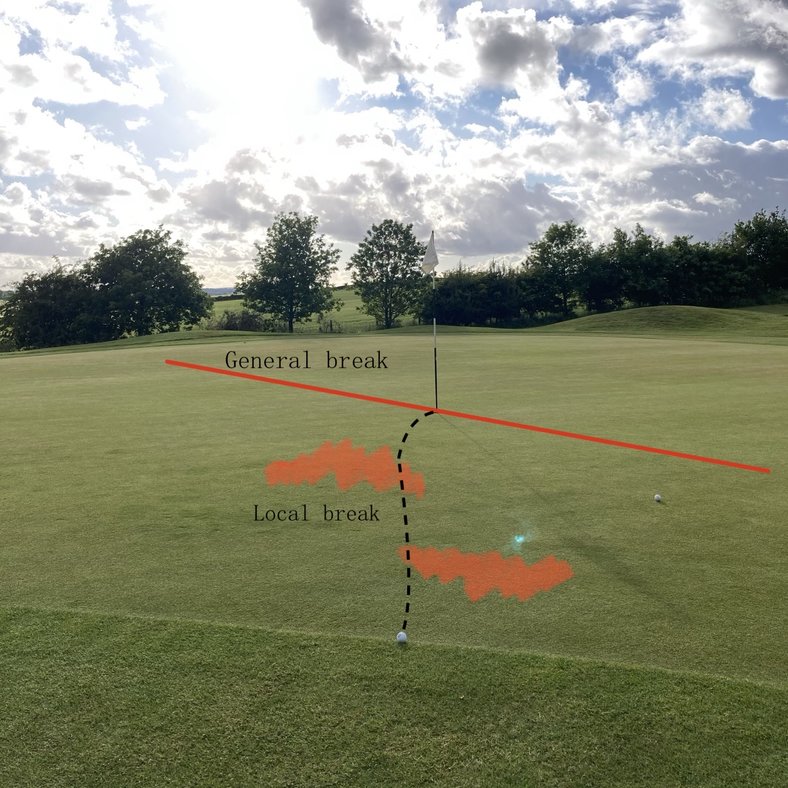
Using Visual and Sensory Cues
In addition to reading the slope and breaks of the green, there are other visual and sensory cues that can assist in accurately reading putts.
Analyzing Shadow and Light Patterns
Shadow and light patterns on the green can provide valuable information about the contours and slopes. Shadows can intensify or minimize the appearance of undulations, helping you visualize the breaks more accurately. Pay attention to the angles and lengths of the shadows as they can indicate the direction and severity of slopes.
Feeling the Grain with Your Feet
While you can’t physically see the grain of the green, you can feel it with your feet. Before stepping on the green, take a moment to feel the texture and direction of the grass. By running your feet along the surface, you can often detect the grain and gain insight into how your putts may be affected. Use this sensory cue to your advantage when reading the greens.
Listening to the Sound of the Ball Roll
The sound the ball makes as it rolls on the green can provide valuable feedback on the surface and the speed of the putt. Pay attention to the sound of the ball rolling and try to develop an understanding of what it signifies. A smooth and consistent sound may indicate a well-struck putt, while a choppy or irregular sound may suggest a misread or uneven surface. By listening to the sound of the ball roll, you can further refine your green reading skills.
Effect of Environmental Factors
Environmental factors, such as wind conditions, moisture levels, and temperature, can greatly impact your ability to accurately read and putt on greens. It’s important to take these factors into consideration during your green reading process.
Accounting for Wind Conditions
Wind is one of the most significant environmental factors that can affect your putting. A strong crosswind can push or pull the ball off its intended line, making it essential to adjust your aim point and stroke accordingly. Pay attention to the direction and strength of the wind and make the necessary adjustments during your green reading process.
Factoring in Moisture Levels
Moisture levels on the green can significantly impact the speed and break of your putts. Generally, wet greens tend to be slower, while dry greens can be faster. Additionally, moisture can influence the grain of the grass, affecting the overall behavior of your putts. Take into account the moisture levels when reading the green and factor it into your decision-making process.
Adjusting for Temperature and Altitude
Temperature and altitude can also affect the behavior of the ball on the green. Warmer temperatures can make the greens softer and slower, while colder temperatures can make them firmer and faster. Similarly, at higher altitudes, the air is thinner, which can result in less resistance and greater distance. Take these factors into consideration when reading greens on different courses and adjust your approach accordingly.

Green Reading Aids and Tools
There are various green reading aids and tools available that can assist you in accurately reading greens. These tools can provide additional information and insights to enhance your decision-making process on the green.
Utilizing Green Reading Books
Green reading books are detailed guides that provide information on the slope, breaks, and contours of greens on specific golf courses. These books are typically created by professional golfers or experienced course designers and can be a valuable resource when it comes to reading greens accurately. Utilize these green reading books to gain a better understanding of the greens on the courses you play.
Using AimPoint Express Method
AimPoint Express is a green reading method that utilizes a numbering system to help golfers determine the amount of break and slope on a putt. By using your feet to feel the slope and applying the corresponding number, you can develop a more precise plan for your putts. Consider taking a lesson or seeking guidance to learn and practice the AimPoint Express method.
Trying Laser and GPS Devices
Laser and GPS devices are commonly used on the golf course to measure distances, but they can also provide valuable information for green reading. Some devices have the ability to calculate the slope and break of the green, assisting you in making more accurate reads. Experiment with different laser and GPS devices to see which one works best for you and can enhance your green reading skills.
Developing a Consistent Pre-shot Routine
Having a consistent pre-shot routine is essential for consistency and confidence when reading greens. A pre-shot routine helps you maintain focus, assess the green, and make accurate decisions before executing your putt.
Identifying the High Percentage Side
Before approaching the green, identify the high percentage side where the ball is more likely to break towards the hole. This can be determined by studying the overall slope, contours, and any visible elements such as water or sand traps. By identifying the high percentage side, you can improve your chances of starting the ball on the correct line and maximizing your chances of sinking the putt.
Analyzing the Overall Slope
As part of your pre-shot routine, analyze the overall slope of the green from different angles. Walk around the green to get a better sense of the breaks and contours. By analyzing the slope, you can anticipate how the ball will break and make informed decisions on your putting line and speed.
Visualizing the Ball Path
Visualization plays a crucial role in effective green reading. Take a few moments to visualize the ball’s path from the initial contact with the putter to the desired target. Visualize the break, speed, and distance, and mentally rehearse a successful putt. By consistently visualizing the ball path, you can cultivate confidence and improve your ability to read greens accurately.
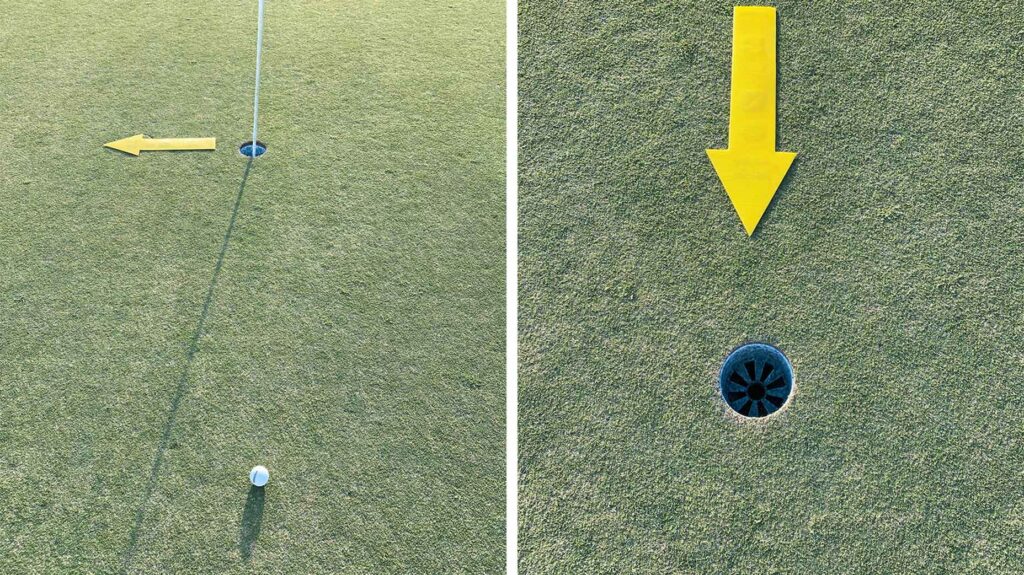
Practicing and Fine-tuning Your Green Reading Skills
Reading greens accurately is a skill that requires practice and refinement. By incorporating specific practice drills and seeking guidance from a golf instructor, you can enhance your green reading abilities and make noticeable improvements in your putting performance.
Experimenting with Different Techniques
There are various techniques and strategies for reading greens, and it’s important to experiment with different approaches to find what works best for you. Try different methods, such as crouching down to view low angles, using a plumb bob to assess slope, or relying on sensory cues. By experimenting with different techniques, you can broaden your knowledge and skill set when it comes to reading greens.
Creating Drills to Improve Reading Ability
Creating drills tailored to improving your green reading ability can greatly enhance your skills. Set up drills that simulate different green conditions, such as various slopes, breaks, or speeds. Practice reading the greens and executing putts under these conditions. By consistently practicing and fine-tuning your green reading skills through drills, you can develop a higher level of proficiency on the greens.
Seeking Guidance from a Golf Instructor
If you’re struggling with reading greens accurately or want expert guidance, consider seeking advice from a golf instructor. A qualified instructor can assess your technique, provide personalized feedback, and offer specific drills or exercises to improve your green reading skills. Working with an instructor can accelerate your learning and help you develop a more consistent and effective approach to reading greens.
Gaining Experience on Various Golf Courses
To become a proficient green reader, gaining experience on different golf courses is essential. Each course presents unique challenges and variations in green surfaces, speeds, and breaks. By exposing yourself to a variety of courses, you can expand your knowledge and adaptability when it comes to reading greens.
Playing on Different Green Speeds
Green speeds can vary significantly from one course to another. Some courses have fast greens, while others may have slower surfaces. By playing on different green speeds, you can develop an understanding of how speed affects the break and adjust your green reading accordingly. Challenge yourself by seeking out courses with differing green speeds to further refine your green reading skills.
Adapting to Varied Green Surfaces
Different golf courses have different grass types and conditions, which can greatly influence the behavior of the ball on the green. Playing on courses with various green surfaces, such as bentgrass, Bermuda grass, or poa annua, can help you familiarize yourself with the unique characteristics of each grass type. By adapting to varied green surfaces, you can become more adept at reading the greens regardless of the course you’re playing.
Learning from Past Experiences
Lastly, learning from past experiences is crucial in developing your green reading skills. Take note of your successes and failures on the green, and reflect on what factors contributed to those outcomes. Keep a journal or note-taking system to record observations and insights from each round of golf. By reviewing these notes and learning from your previous experiences, you can refine your approach to green reading and continuously improve your ability to read greens accurately.
In conclusion, reading greens accurately is a key skill for any golfer looking to improve their putting performance. By understanding the various factors that influence green reading, such as putter selection, green surfaces, eye dominance, environmental conditions, and utilizing aids and tools, you can develop the skills needed to accurately read greens. With consistent practice, experimentation, and experience on different golf courses, you can become a proficient and confident green reader, leading to improved putting success on the greens.



